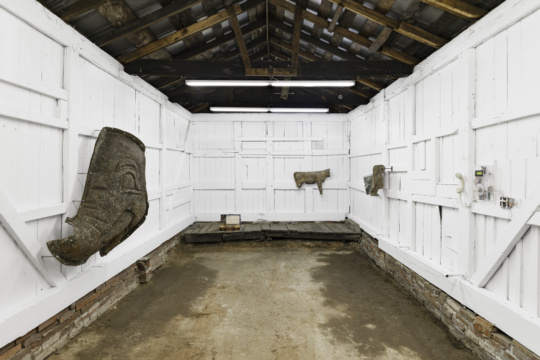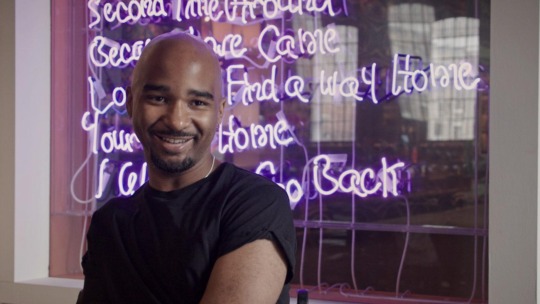
Dear BURNAWAY,
I am about to buy a photograph from an exhibition I saw this weekend. I love it so much and can’t stop thinking about it. So I’m going back (when I get paid) to get it. But first, I wanted to ask you a question. What does it mean to buy a photograph? Can’t the photographer just make an infinite amount of prints? Does it hold value the way an original work of art does? I realized that I don’t exactly know what I’m paying for. Ugh. Yeah. Help plz.
Perplexed in Atlanta
______________
Dear Perplexed,
Well, three cheers to you, Perplexed, for buying art and supporting your local art scene. I love to hear about people going to exhibitions and truly connecting to the work, it makes me very happy; not because I love art-as-commodity, but because I love to know that somewhere out there people are putting their money into their creative community instead of buying stupid shoes that have somehow managed a loathsome “comeback” or spending it on another hideous upholstered ottoman that belongs nowhere and you know it.
So! Your question is a pretty common one that comes up in galleries when buyers are interested in things that aren’t paintings and sculptures, so I’m glad you asked it. Paintings and sculptures are easy for most of us to comprehend buying-wise because they are one-of-a-kind (usually), thus pretty cut-and-dried in terms of ownership. But when you get into the territory of prints (woodcuts, lithographs, silkscreens, etc.), photographs, or video work, people need some clarification as to what, exactly, they are buying.

First things first: a photograph is an “original work of art” just like a painting or sculpture. It’s authored by the artist in the same way. Here, the term “print” doesn’t mean it’s a “reproduction” of anything. We often tend to equate the words in the non-art world, but in the art sphere, they mean different things. There is nothing that came before a photographic print, other than the negative or digital file I suppose, but even those are not the finished work of art. The original art is the print. Same goes for a lithograph or silkscreen or any other studio print process. So there’s that.
SIDENOTE: Buying a giclée print is iffy, in my opinion. Don’t let the Frenchiness of the name fool you, mon cherie. Giclée just means it’s an inkjet print. Purveyors of this medium use the fancier sounding word to skirt around negative connotations of the homely sounding “inkjet.” The printing process is subpar and mostly used for art reproduction, though some artists use it for their original works of art. If you’re into that, cool–but it’s not usually something reputable art galleries deal in. I’d suggest sticking with digital or tradition c-type prints (chromogenic color prints), which have far superior color density and are printed using photo-chemical processes on light-sensitive papers.
Next, editions! editions! editions! They are what separate a fine art print from, say, a poster or a non-collectible thing of paper ephemera. It’s the system by which we keep track of prints, their value, and their scarcity. Any photograph you buy should be contained within an edition or “print run.” This tells how many prints were made. It should be denoted on the image itself, or somewhere in the paperwork or documentation. Look for a fraction penciled somewhere. “2/8” or “130/210,” something like that. The last number is the edition, i.e., how many were printed, and the first number is where your print falls in the group. Typically, the closer to #1 you can get, the better in terms of value. People just adore getting 1/100 or 1/2. Yeah, yeah, I know it’s arbitrary but that’s how it is. Even better if it says “Artist Proof” on it; that’s like the holy grail. (Note: old photographs often won’t have editions, but all newer ones, as in post-1980, should.)

Also, you want to try to buy photographs that were printed less than a five years after they were shot, generally speaking. The closer all of the creative decision-making is, the more collectible the print. “Early” or “vintage” prints are almost always more desirable than “late” prints, meaning prints made many years or decades after the image was shot. Posthumous prints are tricky, and I would say avoid them, but there are always exceptions of “discoveries” like Vivian Maier or Gordon Parks that break the rule. Typically, if the artist wasn’t making the printing decisions themselves, it’s not as desirable. The authorship of the artwork becomes a little watery in that scenario.
If it’s not editioned, be wary, or ask the photographer about it directly if you can. It could mean that they intend to print this particular image ’til the cows come home, which gives you no guarantee that what you’re buying has any kind of scarcity attached to it, which, in the art market, is crucial.
The edition number is essentially a promise. It means that is ALL of the prints that will be made like that, ever. Now, that’s not to say the artist won’t print the image in a different size or on a weird, different paper, or with some other significant variation. They could make a print run of your photograph that is four times bigger than yours, and four times more expensive. But they’ll never recreate yours exactly. Or else, I believe you have permission from the government to slash their tires and burn their house down. Or something like that.
Also, keep in mind that just because you own a print doesn’t mean you have full rights to the image. Meaning, you can’t give permission for “your photograph” to be reprinted in say, a magazine or textbook. The photographer or gallery usually retains all reproduction rights and approval authority for the image.
Finally, the lower the edition number, the higher the value of each individual piece. So in an edition of four prints, each of those prints may be priced higher than they would if you had an edition of 50 at the same size. So, if you’re buying something with an edition of 5,000 — you may want to put that in your consideration wheel-o-fun.
But, as I always say, if you love it, just get it. Better to surround yourself with your idea of beauty than concern yourself with what kind of “investment” you might be able to make by buying it. That game is for chumps.
Do you have a question for Sara? Email her at [email protected].
Are Photographs "Original" Works of Art?
Sara Estes is a writer and curator based in Nashville. She currently works at David Lusk Gallery and is the former gallery coordinator for the Carl Van Vechten and Aaron Douglas Galleries at Fisk University. She is also the apprentice to paintings conservator Cynthia Stow of Cumberland Art Conservation. Estes is the cofounder and curator of the Nashville-based contemporary exhibition space Threesquared. Her writing has been featured in numerous publications, including BURNAWAY, Number, Nashville Scene, Nashville Arts Magazine, ArtsNash, and ArtNow.
Related Stories
Reviews
Art21 x Burnaway
Reviews
As for me, I’m just passing through this planet at Bad Water, Knoxville
Harrison Wayne reviews the entangled sculptures and taxidermic specimens found in As for me, I’m just passing through this planet at Bad Water, Knoxville.
The Incredulity of Jacolby Satterwhite
In April's Art21 x Burnaway feature, we enter and explore the resurrection, rebirth, and regenerative quality of Jacolby Satterwhite's virtual worlds.
Orchid Daze by Lillian Blades at the Atlanta Botanical Gardens
Blake Belcher reviews Atlanta-based Bahamian artist Lillian Blades' new work engaging orchids, transplantation, and diaspora at the Atlanta Botanical Garden.




